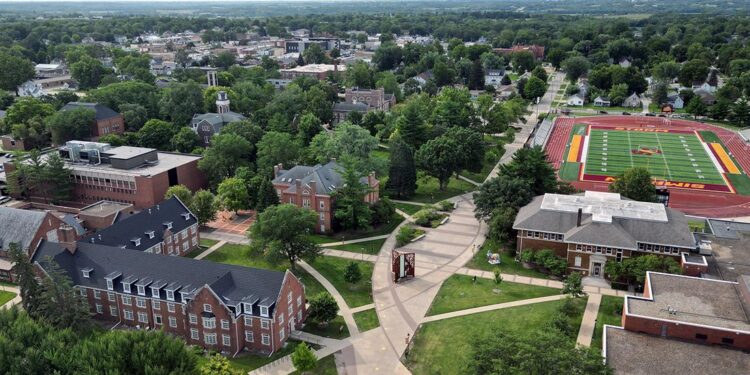In an exciting stride toward enhancing healthcare education, Simpson College is set to acquire cutting-edge medical simulation technology thanks to recently awarded grant funds. This initiative represents a significant investment in hands-on learning, aiming to better prepare students for the challenges of modern medical practice. As healthcare continues to evolve, the integration of advanced simulation tools promises to provide Simpson College’s future medical professionals with invaluable experience, bridging the gap between classroom theory and real-world application.
Simpson College Secures Grant to Enhance Medical Training with Advanced Simulation Technology
Thanks to a significant infusion of grant funding, Simpson College is set to revolutionize its medical training program by integrating state-of-the-art simulation technology. This cutting-edge equipment will provide students with realistic, hands-on experience in a controlled environment, bridging the gap between theory and practice. The simulation tools will enable users to engage with lifelike scenarios, enhancing critical thinking, clinical decision-making, and procedural skills without the risk of real-world consequences.
Key features of the newly acquired technology include:
- High-fidelity patient manikins that mimic vital signs and human responses
- Interactive modules covering a wide range of medical emergencies and routine procedures
- Real-time feedback systems to improve skill retention and performance
- Flexible scenarios customizable for varying skill levels and specialties
| Simulation Feature | Benefit to Students |
|---|---|
| Dynamic Vital Sign Monitoring | Enhances ability to read and react to patient conditions |
| Multi-Specialty Scenarios | Prepares students for diverse clinical environments |
| Performance Analytics Dashboard | Provides detailed insights for personalized improvement |
Exploring the Impact of Simulation Tools on Healthcare Education and Student Competency
Simulation tools are revolutionizing healthcare education by providing students with hands-on, experiential learning opportunities that were once limited to real clinical settings. These advanced technologies allow learners to engage in realistic scenarios that enhance critical thinking, clinical decision-making, and procedural skills without the risk of patient harm. At Simpson College, the integration of medical simulation technology is set to elevate student competency by offering immersive training modules that mimic a wide range of medical emergencies, routine procedures, and patient interactions.
By integrating simulation into the curriculum, educators can track progress and tailor instruction more effectively. Some key benefits include:
- Enhanced skill acquisition: Immediate feedback accelerates learning curves.
- Increased confidence: Repeated practice in safe environments builds student assurance.
- Interprofessional collaboration: Simulated team scenarios foster communication skills.
| Simulation Feature | Educational Benefit | Student Outcome |
|---|---|---|
| Virtual patient cases | Critical thinking | Improved diagnosis accuracy |
| Emergency response drills | Quick decision-making | Faster response times |
| Procedural labs | Technical skill mastery | Higher procedural proficiency |
Recommendations for Integrating Medical Simulation into Simpson College’s Curriculum for Optimal Outcomes
To maximize the benefits of medical simulation technology, it’s essential that Simpson College strategically integrates these tools across multiple disciplines within the healthcare curriculum. This means designing simulation scenarios that reflect real-world challenges students will face, promoting critical thinking and teamwork. Faculty development programs should accompany this rollout, ensuring instructors are proficient in utilizing simulation for both teaching and assessment. Embedding simulation exercises early and often in the course timeline will reinforce practical skills while allowing students to safely learn from mistakes.
Considerations for a smooth integration include:
- Interdisciplinary Collaboration: Foster cooperation between nursing, pre-med, and allied health programs to create shared simulations enhancing holistic patient care perspectives.
- Regular Feedback Mechanisms: Implement structured debriefs post-simulation to deepen reflection and knowledge retention.
- Technology Accessibility: Ensure simulation tools are easily accessible and flexible enough to adapt to varied learning objectives.
| Integration Strategy | Expected Outcome |
|---|---|
| Early Exposure in Curriculum | Improved student confidence and skill acquisition |
| Faculty Training Workshops | Effective simulation delivery and assessment |
| Multi-disciplinary Scenarios | Enhanced teamwork and communication skills |
Closing Remarks
As Simpson College ushers in a new era of hands-on medical training with the help of grant-funded simulation technology, the ripple effects promise to extend far beyond campus walls. This investment not only elevates the educational experience for aspiring healthcare professionals but also strengthens the fabric of Iowa’s medical community by preparing students to meet real-world challenges with confidence and skill. In embracing innovation, Simpson College charts a path forward-one that blends cutting-edge tools with dedicated learning, ultimately nurturing the next generation of compassionate and competent caregivers.










